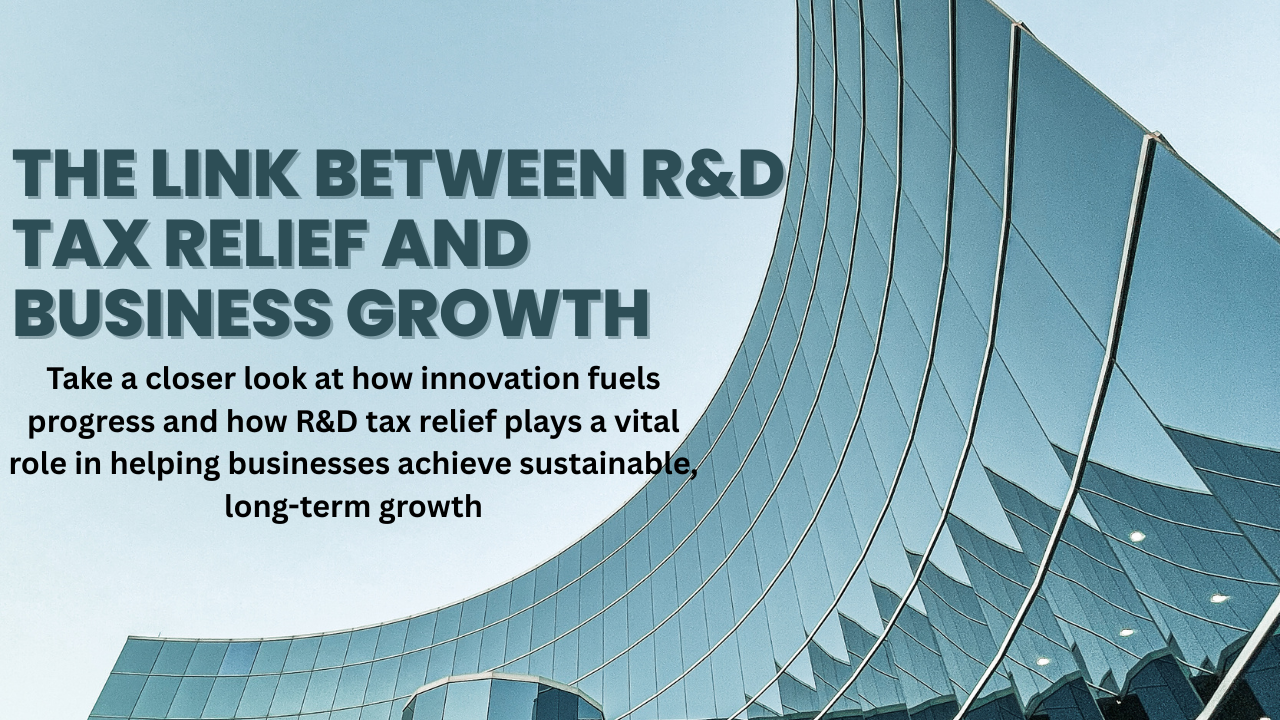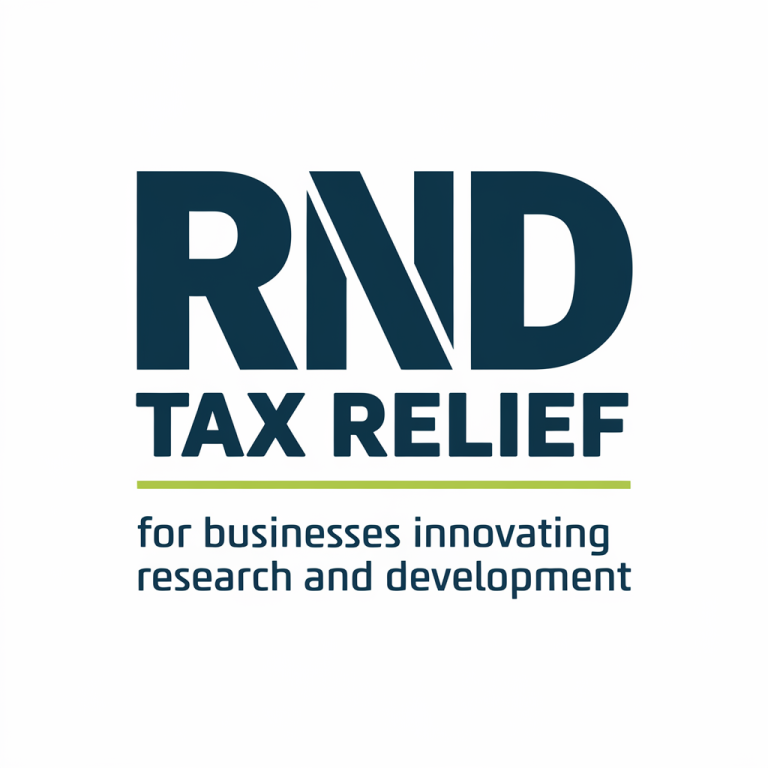The Link Between R&D Tax Relief and Business Growth
Research and development (R&D) has always been the driving force behind innovation. Whether it’s developing smarter software, building greener technology, or improving existing processes, R&D helps businesses adapt to change, stay competitive, and grow.
But innovation doesn’t come cheap. Many companies face high costs when investing in new projects, which can limit their ability to reinvest and expand. That’s where R&D tax relief comes in. This government incentive supports businesses by reducing the financial burden of research and development. For growth-focused companies, it’s a powerful tool that makes innovation more affordable and sustainable.
In this guide, we’ll break down what R&D tax relief is, how it works, and why it’s directly linked to business growth in the UK.
What is Research and Development (R&D)?
R&D isn’t just about inventing new products. It’s also about improving what already exists, solving technical challenges, and finding smarter ways of doing things. Businesses invest in R&D to improve efficiency, reduce costs, and keep up with shifting market trends.
Examples of R&D in action:
Automotive industry – creating fuel-efficient engines or self-driving technology.
Software sector – developing artificial intelligence tools or improving cybersecurity.
Healthcare – advancing medical equipment or treatments.
Clean energy – designing renewable power solutions.
When combined, research and development leads to breakthroughs that move industries forward and strengthen business growth.
How Does R&D Tax Relief Work?
In the UK, the government rewards companies that invest in innovation by offering R&D tax relief. This relief allows businesses to reclaim a portion of their qualifying R&D costs, which can either reduce their tax bill or provide a cash repayment.
There are two main schemes:
SME Scheme – for small and medium-sized businesses.
R&D Expenditure Credit (RDEC) for larger companies or those that don’t qualify under SME rules.
The relief covers a wide range of costs, including:
Staff salaries and National Insurance
Subcontractor costs
Software and consumables
Utilities directly linked to the R&D project
By claiming under the right scheme, businesses can significantly improve their cash flow. To understand the difference, see: R&D tax relief and R&D tax credits .
Why R&D Tax Relief Drives Business Growth
So how exactly does tax relief lead to growth?
Lower innovation costs – Companies can reinvest reclaimed funds into future projects.
Improved cash flow – Immediate financial relief gives businesses more breathing space.
Attracting investment – Investors favour companies with strong innovation strategies.
Competitive advantage – Businesses can adapt quicker to market changes.
Real-life example: A UK manufacturing firm reclaimed over £200,000 through R&D tax credits. Instead of halting product development due to budget limits, the funds were reinvested into expanding their production line, creating new jobs, and increasing market share.
Examples of Growth Through R&D Funding
Manufacturing: A company improves production efficiency by developing new machinery, reducing costs and increasing capacity.
Technology: A software business invests in new cybersecurity tools, attracting new clients and entering global markets.
Healthcare: A biotech firm reclaims relief on lab testing, reinvesting in advanced trials that secure new partnerships.
These examples show how innovation funding directly strengthens long-term growth.
HMRC R&D Tax Relief Eligibility Criteria
Not every project qualifies. HMRC defines R&D as work that seeks to achieve an advancement in science or technology, by solving uncertainties that could not be easily resolved by a competent professional.
To qualify, projects must:
Aim to advance knowledge in a field of science or technology
Attempt to resolve technical or scientific uncertainties
Use a systematic and documented approach
Deliver results not easily replicated by others
Qualifying activities include:
Designing and testing prototypes
Developing new processes or services
Improving existing systems in a way that goes beyond standard practice
Understanding these criteria is crucial to building a successful claim.
Return on Investment of Claiming R&D Tax Relief
The return on investment (ROI) for R&D tax credits can be substantial. The actual benefit depends on factors such as company size, turnover, and accounting period, but average claims often range from tens of thousands to several hundred thousand pounds.
Typical ways businesses reinvest savings:
Hiring additional staff to expand R&D capacity
Purchasing specialist equipment
Funding new product launches
Training employees to support technical growth
This reinvestment cycle is what links R&D tax relief so closely to business growth.
Best Practices for Successful R&D Claims
Getting a claim wrong can trigger HMRC enquiries or delays. To protect against this, businesses should:
Keep detailed project records and supporting evidence
Stay updated on changes to tax credit policy
Regularly review eligibility against HMRC guidance
Avoid inflating or misclassifying costs
Work with an R&D tax relief specialist who understands compliance
These steps help secure the maximum return while staying fully compliant.
How to Get Started with R&D Tax Relief
The process doesn’t have to be complicated. Here’s a simple path to follow:
Identify R&D projects within your business.
Assess whether activities meet HMRC eligibility criteria.
Calculate qualifying expenditure.
Prepare and submit your claim as part of your company tax return.
Want to see how much your business could reclaim? Book a free consultation today with our R&D tax relief team — contact us here .
Frequently Asked Questions
What is the purpose of R&D tax relief? It helps businesses reduce the financial risks of innovation by allowing them to reclaim a portion of qualifying costs.
How does R&D tax relief help businesses grow? By improving cash flow, lowering project costs, and freeing up capital for reinvestment.
What counts as eligible R&D in the UK? Any project that aims to resolve technical or scientific uncertainties, such as developing new products or improving processes.
Can startups claim R&D tax relief? Yes, even pre-revenue startups can claim if they’re undertaking qualifying R&D activities.
How much can a company claim? The amount depends on business size, expenditure, and scheme. Claims can range from a few thousand pounds to several hundred thousand.
How long does a claim take? HMRC usually processes R&D claims within six to eight weeks, though timings can vary.
Conclusion
Innovation and growth go hand in hand. By supporting companies with financial relief, R&D tax relief gives UK businesses the opportunity to invest in projects that shape the future. Whether you’re a startup or an established company, understanding and claiming this incentive can make a real difference to your long-term success.
Ready to take the next step? Start your claim today with our friendly team book a consultation here .





![Accounting Treatment for R&D Tax Relief: Expert UK Guide [2025] 5 Accounting Treatment for R&D Tax Relief](https://rndtaxrelief.co.uk/wp-content/uploads/2025/04/Accounting-Treatment-for-RD-Tax-Relief-768x432.webp)

